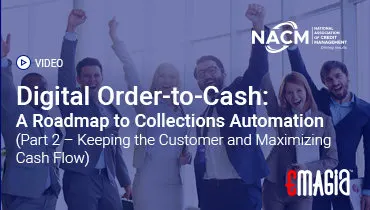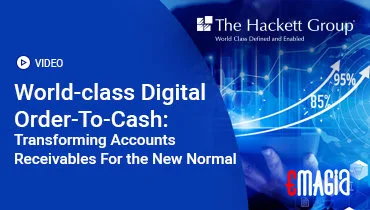In the intricate world of business finance, every transaction, from a small sale to a major equipment purchase, leaves a trail. For businesses to accurately track their financial health, manage operations, and comply with reporting standards, these trails must be meticulously organized. While many people are familiar with the idea of a “ledger,” few understand the crucial distinction between the two fundamental types that underpin robust accounting systems.
This is where the relationship between the subledger vs general ledger becomes paramount. These two components work hand-in-hand, providing both the granular detail needed for daily operations and the summarized view essential for high-level financial reporting. Misunderstanding their roles can lead to financial inaccuracies, reconciliation nightmares, and a clouded view of a company’s true economic standing.
So, what exactly is a subledger? How does it differ from the general ledger? Why do businesses need both, and how do they interact to paint a complete financial picture? This comprehensive guide will delve deep into these two pillars of accounting, clarifying their definitions, exploring their unique purposes, and illustrating their symbiotic relationship. Get ready to gain a crystal-clear understanding of these vital financial tools and how they ensure the integrity of your financial records.
Understanding the General Ledger: The Heartbeat of Accounting
Often referred to as the main book of accounts, the general ledger serves as the central repository for all financial transactions. It provides a summary-level view of a company’s financial position and performance.
Definition and Purpose: The Central Accounting Record
The general ledger is the complete set of all financial accounts of a company. It aggregates all transactions from journals and other source documents into categorized accounts, providing a summary balance for each asset, liability, equity, revenue, and expense. Think of it as the “master book” where every financial event ultimately resides in a summarized form. It is the backbone for preparing core financial statements like the Balance Sheet and Income Statement, which is the essence of accounting gl.
Its primary purpose is to maintain a comprehensive and balanced record of all financial transactions that occur within a business, ensuring that total debits always equal total credits. This fundamental balance is critical for the integrity of financial reporting and the successful execution of gl in accounting processes.
Structure of a General Ledger: Summary-Level Accounts
The general ledger contains summary-level ledger accounts, often represented as T-accounts. Each account will show its opening balance, all debits and credits posted to it during an accounting period, and its ending balance. Examples of accounting general ledger accounts include:
- Cash
- Accounts Receivable
- Accounts Payable
- Inventory
- Sales Revenue
- Salaries Expense
- Retained Earnings
While the general ledger example for “Cash” will show the total cash balance, it won’t detail every individual cash deposit or withdrawal from specific customers or vendors, that level of detail is left for its counterpart.
Delving into the Subledger: The Detail Behind the Summary
While the general ledger provides the big picture, businesses often need more granular information for operational purposes. This is where the subledger comes in.
What is a Subledger? A Detailed Supplementary Record
A subledger (often called a subsidiary ledger or sub ledger) is a detailed collection of individual accounts that collectively make up a single, summary account in the general ledger. It provides the supporting detail for specific control accounts in the main ledger. For instance, while the general ledger might have one “Accounts Receivable” account showing the total amount owed by *all* customers, a separate subledger would contain individual accounts for *each* customer, detailing what each specific customer owes.
This explains the core subledger meaning and subledger definition: it’s a breakdown. In essence, what is a subsidiary ledger in accounting? It’s where you find the names, specific invoices, and individual transaction histories that add up to the summary figure in the general ledger example.
Purpose of the Subsidiary Ledger: Granular Insight and Operational Management
The primary purpose of a subsidiary ledger is to provide the granular detail necessary for daily operations and decision-making. For instance, an Accounts Receivable subledger allows a business to know exactly which customer owes what, facilitating collections. Similarly, an Accounts Payable subledger tracks who the company owes, and for what, enabling timely payments. Without this detailed view, operational management would be severely hindered. This is the practical application of what is a subledger in accounting.
It also serves a critical internal control function, allowing for easy reconciliation against the summary balance in the general ledger, ensuring accuracy and detecting discrepancies. This often involves the use of specific ledger accounts that roll up into the main account.
Subledger vs General Ledger: Key Distinctions and Interplay
The relationship between the subledger vs general ledger is one of summary and detail, control and support. They are interdependent, each serving a unique yet complementary role in accounting.
Level of Detail: Summary vs. Granular
The most fundamental difference is the level of detail. The general ledger provides a summary balance for each account. For example, it might show a total of $100,000 for Accounts Receivable. Conversely, the subsidiary ledger provides the granular breakdown. For that same Accounts Receivable, it would list individual balances for Customer A ($20,000), Customer B ($50,000), Customer C ($30,000), etc., where the sum equals the GL total. This distinction is central to understanding gl vs subledger.
Purpose: Financial Reporting vs. Operational Management
The general ledger is primarily used for preparing aggregated financial statements for external stakeholders (investors, creditors, regulators) and for overall financial analysis. The subledger, however, is designed for internal operational management. It provides the specific information needed for day-to-day tasks like sending customer invoices, paying specific vendors, or managing individual assets. This practical utility defines the role of a sub ledger.
Number of Accounts: Fewer vs. Many
A general ledger typically has a manageable number of accounts, covering all major categories (assets, liabilities, equity, revenues, expenses). A subledger, on the other hand, can contain hundreds or even thousands of individual accounts, depending on the volume of transactions and entities it tracks. For instance, a payment ledger within an Accounts Receivable subsidiary might have a separate record for every customer invoice.
Transaction Flow: How Information Moves Between Ledgers
Individual transactions are first recorded in the relevant subledger. For example, when a sale on credit occurs, the specific customer’s account in the Accounts Receivable subsidiary ledger is updated. Simultaneously, a summary entry (or an automated posting) is made to the main Accounts Receivable control account in the general ledger. This ensures that the total balance in the control account always equals the sum of all balances in its supporting subledger. This interconnected flow is what makes the relationship between a general ledger vs subledger so crucial for maintaining balance and accuracy, exemplifying a robust double ledger system.
Common Examples of Subsidiary Ledgers and Their General Ledger Counterparts
To further illustrate their complementary roles, let’s look at specific scenarios where subsidiary ledgers are commonly used and how they relate to their corresponding general ledger control accounts.
Accounts Receivable Subledger: Tracking Customer Debt
The Accounts Receivable subsidiary ledger example tracks the specific amounts owed by each individual customer. It details every invoice issued to a customer, payments received from them, and any credit notes or adjustments. The sum of all individual customer balances in this ledger must always match the total balance in the “Accounts Receivable” control account in the general ledger. This granular detail is vital for effective collections management and customer communication, often comprising a payment ledger for each customer.
Accounts Payable Subledger: Managing Vendor Obligations
Conversely, the Accounts Payable subledger provides a detailed record of what the company owes to each individual vendor. It lists every bill received from a supplier, payments made to them, and any debit notes. The sum of all individual vendor balances in this ledger must equal the total balance in the “Accounts Payable” control account in the general ledger. This allows for precise vendor management, ensuring timely payments and accurate reporting of liabilities.
Fixed Asset Subledger: Detailing Company Property
For tangible assets like machinery, vehicles, or buildings, a Fixed Asset subledger provides detailed information about each individual asset. This might include its acquisition date, original cost, useful life, depreciation method, accumulated depreciation, and even serial numbers. The total cost of all assets in this subsidiary ledger would correspond to the “Fixed Assets” control account in the general ledger, and similarly for accumulated depreciation. This level of detail is crucial for asset management, tax reporting, and financial planning.
Inventory Subledger: Managing Stock Levels and Costs
For businesses with significant inventory, an Inventory subledger (or perpetual inventory system) tracks the quantity and cost of each individual item in stock. It records every purchase, sale, return, and adjustment for each SKU. The total value of all items in this subledger would reconcile to the “Inventory” control account in the general ledger. This detail is essential for inventory management, cost of goods sold calculations, and preventing stockouts or overstocking.
The Reconciliation Process: Ensuring Accuracy and Balance
The integrity of any accounting system that uses both a general ledger and subsidiary ledger hinges on a critical process: reconciliation. This ensures that the detailed records align perfectly with the summarized totals.
Why Reconciliation is Crucial: Maintaining Financial Integrity
Reconciliation is the process of comparing the total balance of a control account in the general ledger with the sum of all individual balances in its corresponding subledger. This process is crucial because it acts as an internal control, verifying the accuracy of both sets of records. Any discrepancy immediately signals an error that needs to be investigated and corrected. Without regular reconciliation, the numbers presented in the general ledger and, by extension, the financial statements, cannot be fully trusted. This is a core aspect of how the double ledger system provides checks and balances.
The Reconciliation Process: A Regular Check-Up
The reconciliation process typically involves:
- Generating Reports: Running reports from both the subledger (e.g., an aged accounts receivable report) and the general ledger (the balance of the control account).
- Comparison: Directly comparing the total from the subledger report to the balance in the general ledger control account.
- Investigating Discrepancies: If the totals do not match, the accounting team must investigate the individual transactions in both ledgers to identify the source of the discrepancy. Common causes include data entry errors, forgotten postings, or timing differences.
- Making Adjustments: Once an error is identified, the necessary correcting journal entries are made to bring the ledgers back into balance.
This process should be performed regularly – often monthly – as part of the overall financial close procedures. This ensures the continuous accuracy of all ledger accounts.
Leveraging Technology: How Accounting Software Manages Both Ledgers
For any modern business, managing the intricacies of both a subledger vs general ledger manually is virtually impossible due to the sheer volume and complexity of transactions. Technology plays a pivotal role in seamlessly integrating and automating these processes.
From Manual to Automated: The Digital Transformation of Ledgers
In historical accounting, a double ledger system meant physically maintaining separate books and manually reconciling them. For large enterprises with thousands of customers, vendors, or assets, this would be an overwhelming task, highly prone to errors.
Modern accounting software and Enterprise Resource Planning (ERP) systems have revolutionized this. When a transaction is entered (e.g., an invoice issued to a customer), the software automatically:
- Updates the specific customer’s account in the Accounts Receivable subledger.
- Posts a corresponding summary entry to the Accounts Receivable control account in the general ledger.
This automated synchronization is a cornerstone of efficient gl accounting in today’s digital age.
Benefits of Integrated Accounting Systems
Using integrated software to manage both general ledger accounts and subsidiary ledger accounts offers immense benefits:
- Increased Efficiency: Automation drastically reduces manual data entry and reconciliation time.
- Enhanced Accuracy: Eliminates human error in postings and ensures consistency between ledgers.
- Real-time Data: Provides up-to-the-minute balances in both detailed and summary accounts.
- Streamlined Reporting: Facilitates the quick and accurate generation of financial statements and operational reports.
- Stronger Internal Controls: Automated reconciliation helps identify and prevent fraud or errors more effectively.
This digital approach is essential for any business seeking to manage its finances effectively and gain immediate insights from its gl ledger and supporting details.
Strategic Advantages of Understanding Both Ledgers
Beyond the operational benefits, a clear understanding of the distinction and relationship between a general ledger vs subledger offers significant strategic advantages for finance professionals and business leaders.
Enhanced Financial Reporting and Analysis
The combination of summary data from the general ledger and detailed data from sub-ledgers provides a robust foundation for comprehensive financial reporting. Leaders can view high-level summaries (e.g., total Accounts Receivable) but can also drill down to the individual customer level to understand underlying trends, risks, or opportunities. This granular insight informs better strategic decisions.
Improved Operational Control and Decision-Making
Operational teams rely heavily on subledger data. For example, the collections team needs to know exactly which customers owe what to prioritize their efforts. The purchasing department needs detailed vendor balances to manage supplier relationships. This detailed visibility empowers operational leaders to make informed, timely decisions that impact daily cash flow and business relationships.
Robust Audit Trail and Fraud Detection
The structured relationship between the general ledger and its supporting subledger provides a clear audit trail. Auditors can easily trace a summary balance in the main ledger down to the individual transactions in the subsidiary ledger, verifying accuracy and compliance. Discrepancies between the two ledgers can also act as red flags, indicating potential errors or even fraudulent activity, strengthening internal controls.
Emagia: Elevating Financial Clarity Through Integrated Ledger Management
In the complex and demanding world of modern finance, where precise cash flow management and robust financial reporting are paramount, Emagia’s AI-powered Order-to-Cash (O2C) platform is meticulously designed to enhance the integrity and efficiency of your financial ledgers. We understand that while the general ledger provides the ultimate summary, the accuracy of its control accounts, particularly for receivables, relies heavily on the detailed, real-time data maintained in the subsidiary ledger.
Emagia’s platform centralizes and unifies all your critical Accounts Receivable data – from sales orders and invoices to cash application and collections interactions. By automating processes like intelligent cash application and proactive collections management, Emagia ensures that every customer transaction is accurately recorded and reconciled within its dedicated subledger. This meticulous attention to detail at the granular level means that the summary data flowing up to your Accounts Receivable control account in the general ledger is always precise and up-to-date.
By providing real-time visibility and advanced analytics into your receivables portfolio, Emagia helps finance teams identify and resolve discrepancies proactively, long before they can impact your gl ledger. This proactive approach simplifies the reconciliation process, strengthens internal controls, and ensures that your financial statements accurately reflect your true Accounts Receivable position. By seamlessly integrating detailed operational data with summarized financial records, Emagia empowers businesses with unparalleled clarity, enabling them to make smarter strategic decisions and maintain the highest standards of financial integrity.
Frequently Asked Questions (FAQs) About Subledger vs General Ledger
What is the fundamental difference between a subledger and a general ledger?
The fundamental difference is in the level of detail: a general ledger provides summary balances for all accounts (e.g., total Accounts Receivable), while a subledger provides granular, detailed records for specific individual accounts that collectively make up a general ledger balance (e.g., individual customer balances within Accounts Receivable).
Why do companies use subsidiary ledger accounts in addition to the general ledger?
Companies use subsidiary ledger accounts to manage operational details (e.g., knowing what each customer owes), facilitate daily transactions, enhance internal controls, and support easy reconciliation with the summary balances in the general ledger, ensuring greater accuracy and transparency.
What is a ‘control account’ in the general ledger?
A ‘control account’ in the general ledger is a summary account whose balance must equal the total of all individual balances in its corresponding subledger. For example, the ‘Accounts Receivable’ account in the general ledger is a control account for the Accounts Receivable subledger.
Can a business operate with only a general ledger and no subledger?
While a very small business with minimal transactions might theoretically operate with only a general ledger, it’s impractical and inefficient for most. Without sub-ledgers, it would be impossible to track detailed operational information (like individual customer balances or vendor bills), leading to a lack of control and increased risk of error.
How often should subledger accounts be reconciled to the general ledger?
Subledger accounts should be reconciled to their corresponding general ledger control accounts regularly, typically at least monthly, as part of the financial close process. For high-volume accounts like Accounts Receivable or Accounts Payable, daily or weekly reconciliation may be more appropriate to quickly identify and resolve discrepancies.
What are some common examples of subsidiary ledger types?
Common examples of subsidiary ledger types include the Accounts Receivable subledger (for individual customer balances), Accounts Payable subledger (for individual vendor balances), Fixed Asset subledger (for individual assets), and Inventory subledger (for individual stock items).
Is GL accounting solely focused on the general ledger?
No, GL accounting encompasses the entire process of recording, summarizing, and reporting financial transactions to prepare financial statements. While the general ledger is central, effective GL accounting relies heavily on the detailed and accurate data provided by sub-ledgers to ensure the integrity of the overall financial records.
Conclusion: Building Financial Precision Through Interconnected Ledgers
As we’ve thoroughly explored, the relationship between the subledger vs general ledger is not one of competition, but of indispensable partnership in modern accounting. The general ledger provides the concise, top-level financial summaries crucial for reporting and strategic overview, while the subsidiary ledger offers the granular detail vital for day-to-day operations and management.
Together, these two layers of financial record-keeping create a powerful and robust system. The discipline of regular reconciliation ensures their perpetual alignment, safeguarding against errors and providing a comprehensive audit trail. In an increasingly complex business environment, leveraging integrated accounting software to seamlessly manage both the general ledger and its supporting sub-ledgers is not just an advantage—it’s a necessity for maintaining financial integrity, operational efficiency, and a clear vision of your company’s true financial health.



